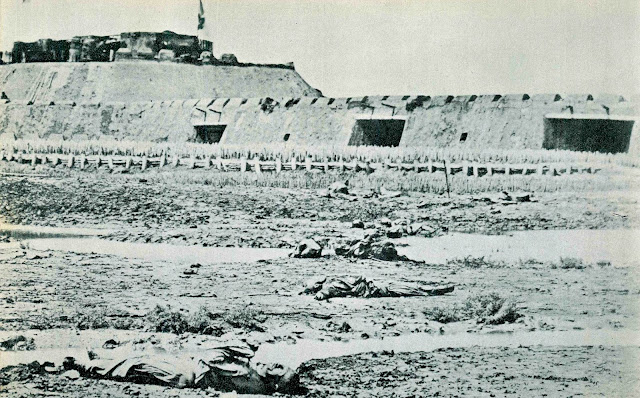The Arrow War, the Second Opium War, was fought by a coalition of British and French troops against the Qing forces from October 8, 1956 to October 24, 1860. in October 1856, the Qing troops embezzled a British ship, the Arrow.
In 1860, when British and French troops occupied Dagu Fort in Beitang Fort, the gateway to Tianjin, it was photographed by Italian Ferry Cheveat, who accompanied the British troops who occupied it to Beijing as a military photographer. For the first time, he photographed Prince Gongchun, younger brother of the Qing Emperor Wenzong, at the Royal Court of China, which lost the Dagu Fort in 1860.
On August 1, 1860, the wooden ammunition depot in Beitang Fort, built in 1550, was looted. In 1840, the Qing court had expanded the northeast fort into five: Dongying, South Ying, North Ying, Hua Ying, and the only new fort, Dongying became the base.
From August 21 to 22, 1860, a large number of Qing soldiers were killed in a bloody battle at Dagukou in Beitang Fort. After Dagu Fort was occupied by British and French troops, the bodies of the dead Qing soldiers were scattered all over the place. The Dagu Fort occupied by the British and French forces was an important fortress to defend against attacks on the city. In the Middle Ages, even sophisticated defenses were little more than ornaments for the allied British and French armies with their powerful battleships and guns. Qing soldiers fell prey to the cannons of the allied forces.
On October 18, 1860, the allied forces invaded the Forbidden City in Beijing. Under the mediation of the Russian minister, the Treaty of Peking was signed between the allied forces and the Qing Emperor on October 20. The treaty allowed the Qing government to open the port of Tianjin, cede the Kowloon Peninsula to the British, and allow Chinese to travel abroad.

